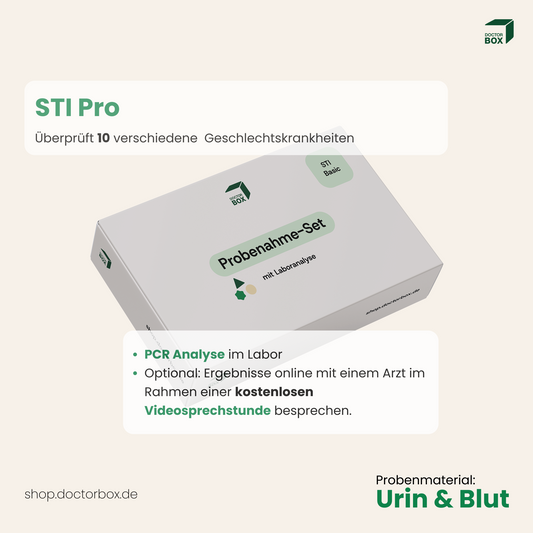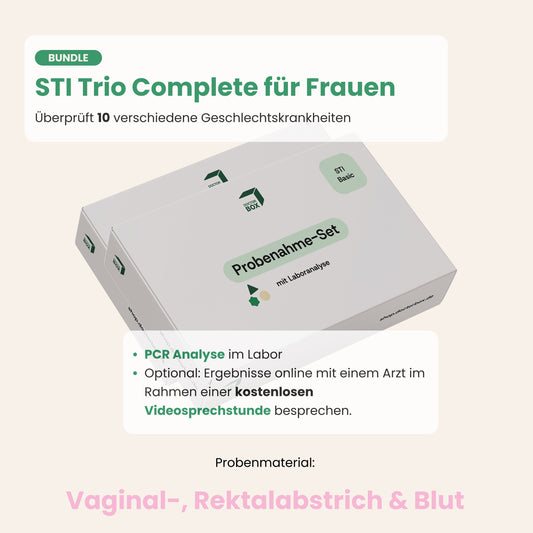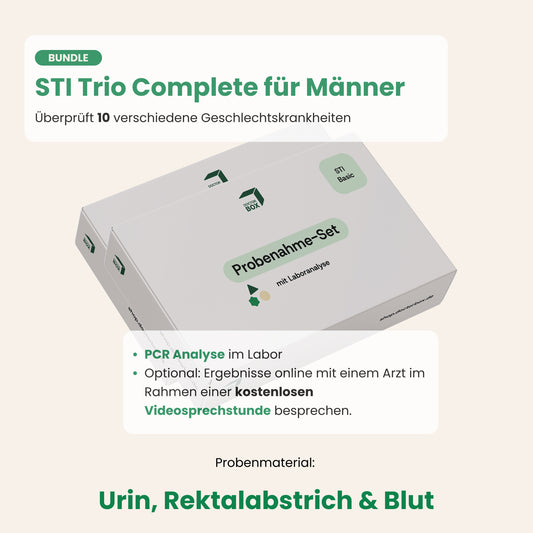endocarditis
Miriam WeihermüllerIf there are inflammatory processes on the inner lining of the heart or on the heart valves, physicians speak of endocarditis.
In most cases, one or more heart valves are inflamed in this disease, primarily the aortic and/or mitral valve. In rare cases, the right heart valves are also inflamed.
Endocarditis is most often caused by bacteria, more rarely by fungal infections. However, there are also non-infectious forms of endocarditis: In such a non-bacterial form, the endocardium becomes inflamed without colonization by pathogens, for example in the context of an existing rheumatic fever.
In western countries, the non-infectious form of endocarditis has become increasingly rare. Around 6 people per 100,000 inhabitants develop infectious endocarditis every year. This corresponds to an average of around 5,000 new cases. Most cases of endocarditis occur before the age of 50.
A basic distinction is made between two forms of endocarditis: In the case of an acute course of the disease, the personal condition of the affected person deteriorates very quickly. In such a case, we speak of “endocarditis acuta”.
The second form is the subacute form, the so-called endocarditis lenta. Here the symptoms appear only gradually and are therefore often not recognized as signs of endocarditis.
It is important to recognize an inflammation of the inner lining of the heart as early as possible and to treat it adequately in order to avoid severe forms.
In the ICD-10, the international index of diseases, endocarditis can be found in the chapter "Acute and subacute endocarditis" under the numbers I33.0-I33.9.
Symptoms: what to look out for in endocarditis?
How endocarditis manifests itself in individual cases depends on the underlying cause and the course. However, the symptoms are generally similar to those of sepsis (blood poisoning).
basically only develops after a bacterial infection has passed. About two to three weeks after an infection with streptococci - usually in the form of a throat or tonsillitis - the so-called rheumatic fever can break out. Affected patients develop high fever and painful inflammation of various joints (migratory polyarthritis) together with inflammation of the heart valves (rheumatic endocarditis). Acute endocarditis wird häufig durch Staphylokokken ausgelöst und macht sich durch plötzlich auftretende und schnell fortschreitende Symptome bemerkbar. Zu diesen Frühsymptomen gehören:
- chills
- pronounced weakness and tiredness
- Fever: Almost all those affected have a fever over 39 degrees Celsius.
- weight loss
- night sweats
- decreased appetite
- Altered or newly occurring heart murmurs and heart palpitations (tachycardia)
- clouding of consciousness
- joint and muscle pain
These symptoms also appear in connection with other diseases. For this reason, endocarditis is often not recognized until late in some cases.
In the further course, bacterial pathogens and thrombotic material build up on the heart valves as a result of the inflammation of the inner lining of the heart. Small, also infectious particles can detach from these deposits, which eventually reach other parts of the body via the bloodstream and can block small vessels there (embolism).
Depending on which body region is affected, these embolisms result in more specific endocarditis symptoms such as:
- lentil-sized, painful, red nodules (called Osler nodules) on toes and fingers.
- Some patients also show small, pinhead-shaped skin hemorrhages (petechiae) - mostly on the nails.
- painless bleeding on the soles of the feet and palms (Janeway lesions)
- So-called “septic-embolic herd encephalitis” can occur in the central nervous system: This manifests itself, for example, in stroke-like symptoms such as stiff neck, pronounced drowsiness or severe headaches.
- water retention (edema)
- renal infarction
- Roundish hemorrhages on the retina of the eye (so-called Roth spots).
As the inflammation of the inner lining of the heart progresses, there are more and more signs that indicate a declining function of the heart and heart valves. These include, for example, shortness of breath, symptoms in the upper abdomen with enlargement of the liver and spleen, and anemia.
The multifaceted symptom picture shows how dangerous endocarditis can be. The pathogens can severely damage various body organs such as the kidneys or the brain and, in the worst case, lead to multi-organ failure.
basically only develops after a bacterial infection has passed. About two to three weeks after an infection with streptococci - usually in the form of a throat or tonsillitis - the so-called rheumatic fever can break out. Affected patients develop high fever and painful inflammation of various joints (migratory polyarthritis) together with inflammation of the heart valves (rheumatic endocarditis). subacute form of endocarditis (endocarditis lenta) begins with insidious signs and symptoms. The typical causative agent of this form of endocarditis, Streptococcus viridans, leads to mild, persistent fever, occasional chills, reduced appetite and weight loss in the affected patients. Persistent inflammatory reactions also affect other body organs in the subacute form.
In the case of non-infectious endocarditis, the symptoms can be somewhat different: in the case of rheumatic endocarditis, for example, the focus is more on the symptoms of rheumatic fever, such as spreading joint pain.
Inflammation of other layers of the heart wall can also occur, such as myocarditis (inflammation of the heart muscle) or pericarditis (inflammation of the sac around the heart), which can cause symptoms such as tachycardia or chest pain.
Course: how dangerous is endocarditis?
The exact course of the disease and the associated chances of survival of the affected patients depend on the type of endocarditis.
In the case of a non-infectious form of the disease, the further course depends on the underlying disease.
In the case of bacterial (infectious) endocarditis, the further prognosis depends on various factors, such as age, the general condition of the affected patient, the time of diagnosis and any previous cardiac damage. The sensitivity of the bacterial pathogen to antibiotics also plays an important role. If the endocarditis is caused by streptococci, for example, then it can generally be treated very quickly and easily. Those affected feel well again after just a few days and the fever also subsides.
However, if staphylococci are responsible for the endocarditis, the therapy can last a little longer.
If antibiotic treatment is started in good time, around three quarters of the affected patients can survive endocarditis today. Unfortunately, the prognosis for those affected who already suffer from heart failure (heart weakness) or a prosthetic heart valve is worse than for patients who were healthy before the endocarditis.
Untreated bacterial endocarditis is usually fatal. The risk of permanent organ damage as a result of endocarditis complications is also significantly increased.
Causes and risk factors: how does endocarditis develop?
Cardiac inflammation can have a variety of causes.
Bacterial (infectious) endocarditis
This form of endocarditis is caused by pathogens that reach the heart through the bloodstream. The bacteria come from the body's internal sources of inflammation, which the affected patients often go unnoticed for a long time because they do not cause any symptoms.
Bacterial (infectious) endocarditis can be caused by staphylococci, streptococci, or enterococci. In rare cases, other pathogens such as legionella, chlamydia or mycoplasma are the cause of the inflammation. According to experts, fungal infections account for only about one percent of all endocarditis cases.
The body's immune system usually manages to fight off the pathogens. If the bacteria get to the mirror-smooth surface of the heart (endocardium), they usually cannot stick to it. However, minor injuries to the inner lining of the heart – such as those that can occur as a result of an operation – are an ideal entry point for bacterial pathogens. They settle there and begin to damage the tissue more and more: endocarditis occurs!
In most cases, the bacterial pathogens attack a heart valve. The aortic valve or the mitral valve between the left atrium and the left ventricle is particularly frequently affected. The heart valve can be so severely damaged by the inflammation that it is even completely destroyed. In addition, so-called vegetation (deposits) of inflammatory cells and bacteria develop on the heart valve.
Infectious endocarditis is particularly at risk for people who already have a damaged inner lining of the heart, because the bacterial pathogens can settle there much more easily.
- For example, a congenital or an acquired heart defect can attack the inner lining of the heart and thus promote the development of endocarditis.
- Heart operations are also a major risk factor, especially when foreign bodies are used during the operation, such as artificial heart valves, but also pacemaker cables or venous catheters. The infectious pathogens can enter the bloodstream and thus the heart via catheters and needles.
- Endocarditis can also occur when many bacteria enter the blood system. This can also happen, for example, in the context of dental interventions: the finest micro-injuries then become the entry point for the bacteria.
- Bacteria can also enter the bloodstream through an abscess and eventually migrate to the heart.
- Drug addicts who give injections can introduce bacteria into the body via the veins and thus promote the development of endocarditis.
However, bacterial pathogens do not always have to lead to infectious endocarditis. There are also certain medical conditions that can cause noninfectious endocarditis:
basically only develops after a bacterial infection has passed. About two to three weeks after an infection with streptococci - usually in the form of a throat or tonsillitis - the so-called rheumatic fever can break out. Affected patients develop high fever and painful inflammation of various joints (migratory polyarthritis) together with inflammation of the heart valves (rheumatic endocarditis). Rheumatic endocarditis entsteht grundsätzlich erst nach einer abgelaufenen bakteriellen Infektion. Ungefähr zwei bis drei Wochen nach einer Infektion mit Streptokokken – in der Regel in Form einer Rachen- oder Mandelentzündung – kann das sogenannte rheumatische Fieber ausbrechen. Die betroffenen Patienten entwickeln hohes Fieber und es kommt zu einer schmerzhaften Entzündung unterschiedlicher Gelenke (wandernde Polyarthritis) zusammen mit einer Herzklappenentzündung (rheumatische Endokarditis).
In some cases, skin rashes or skin nodules (erythema nodosum) can also become noticeable.
In this case, the bacterial pathogens do not lead directly to the infection. Rather, the body's immune system mistakenly targets the tissue structures of the heart and joints. In such a case, doctors speak of endocarditis verrucosa. To prevent rheumatic fever from developing in the first place, streptococcal infections are generally treated with antibiotics.
Cardiac inflammation can also occur as part of the rheumatic disease lupus erythematosus. If such an inflammation of the endocardium occurs, physicians speak of Libman-Sacks endocarditis. Similar to rheumatic endocarditis, it is caused by dysregulation of the body's immune system.
There are also other forms of endocarditis, such as Löffler's endocarditis.
This form of endocarditis, also known as eosinophilic endocarditis, occurs only in rare cases and occurs as part of the so-called Löffler syndrome. The lung tissue in particular is occupied by the body's own defense cells, so-called eosinophilic granulocytes. If the heart is also affected, the endocardium (inner lining of the heart) thickens and ultimately tissue stiffens. The result is a loss of heart function.
Therapy: what are the options for endocarditis?
If the doctor can detect bacterial pathogens in the blood, an antibiotic is prescribed as an infusion. Intravenous administration allows the active ingredient to enter the bloodstream more quickly than in conventional tablet form. Drug treatment generally lasts four to six weeks and bed rest is required during this time! Even after the end of the treatment, the doctors treating you still order a blood culture in order to be able to reliably assess the success of the treatment.
If the antibiotic has worked as desired, no bacteria should be detectable in the blood.
If the bacterial endocarditis is caused by contaminated foreign bodies, such as an infected heart valve replacement, then – in addition to drug treatment – another surgical procedure is required to remove the foreign body.
If there are further complications such as vegetation (inflammatory deposits on a heart valve) or progressive heart failure, the affected tissue can be removed during an operation. In some cases, heart valves may need to be replaced.
The goal of treatment for the less common non-infectious form of endocarditis is to suppress immune system activity, for example with cortisone.
What you can do yourself with endocarditis
Bacterial pathogens that can cause endocarditis very often enter the body through the mouth or infected skin areas. You can effectively protect yourself from inflammation by keeping your body's natural protective barrier intact.
- Pay attention to careful oral and hand hygiene.
- Always ensure thorough wound disinfection so that bacterial pathogens don't stand a chance!
- If your doctor prescribes an antibiotic for you, please take it exactly as instructed! However, please never take antibiotics yourself to avoid dangerous resistance.
- Avoid tattoos and piercings.
If you are in an endocarditis risk group, experts recommend preventive antibiotic treatment before dental procedures or certain surgical procedures. These are taken approximately 30 to 60 minutes before the operation or procedure. In this way, the risk of bacterial infection can be effectively reduced.
Such a prophylactic antibiotic intake is recommended, for example, if:
- an artificial heart valve is present (mechanical or biological)
- Endocarditis disease has already occurred at an earlier point in time.
- there is a congenital heart defect.
- a heart valve was reconstructed with an artificial material.
Sources
https://flexikon.doccheck.com/de/Endocarditishttps://flexikon.doccheck.com/de/Endokard
https://www.msdmanuals.com/de-de/heim/herz-und-gef%C3%A4%C3%9Fdiseases/endocarditis/infekti%C3%B6se-endokarditis
https://www.gelbe-liste.de/diseases/endocarditis#causes
https://www.amboss.com/de/wissen/Infekti%C3%B6se_Endocarditis/
https://www.herzstiftung.de/infos-zu-herzopathies/endocarditis/symptome
https://deximed.de/home/clinical-topics/heart-vascular-circuit/patient-information/heart-valve-diseases/endocarditis-infectious
http://www.medizinfo.de/kardio/endocard/start.shtml
© Konstantin Yuganov / Adobe Stock




